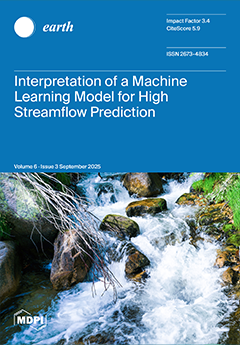In the exploitation of ion-adsorption rare earth ores, the environmental effects of leaching agents are key constraints for green mining. Understanding the release behavior of typical heavy metals from soils under leaching conditions is of great significance. Laboratory column leaching experiments were conducted
[...] Read more.
In the exploitation of ion-adsorption rare earth ores, the environmental effects of leaching agents are key constraints for green mining. Understanding the release behavior of typical heavy metals from soils under leaching conditions is of great significance. Laboratory column leaching experiments were conducted to systematically investigate the effects of three leaching agents—(NH
4)
2SO
4, Al
2(SO
4)
3, and MgSO
4—as well as varying concentrations of Al
2(SO
4)
3 on the release and speciation transformation of heavy metal Pb in mining-affected soils. The results revealed a three-stage pattern in Pb release—characterized by slow release, a sharp increase, and eventual stabilization—with environmental risks predominantly concentrated in the middle to late stages of leaching. Under 3% (NH
4)
2SO
4 and 3% Al
2(SO
4)
3 leaching conditions, Pb concentrations in soil increased significantly, with a higher proportion of labile fractions, indicating pronounced activation and risk accumulation. Due to its relatively weak ion-exchange capacity, MgSO
4 exhibited a lower and more gradual Pb release profile, posing substantially lower pollution risks compared to (NH
4)
2SO
4 and Al
2(SO
4)
3. Pb release under varying Al
2(SO
4)
3 concentrations showed a nonlinear response. At 3% Al
2(SO
4)
3, both the proportion of bioavailable Pb and the Risk Assessment Code (RAC) peaked, while the residual fraction declined sharply, suggesting a threshold effect in risk induction. All three leaching agents promoted the transformation of Pb in soil from stable to more labile forms, including acid-soluble, reducible, and oxidizable fractions, thereby increasing the overall proportion of active Pb (F1 + F2 + F3). A combined analysis of RAC values and the proportion of active Pb provides a comprehensive framework for assessing Pb mobility and ecological risk under different leaching conditions. These findings offer a theoretical basis for the prevention and control of heavy metal risks in the green mining of ion-adsorption rare earth ores.
Full article





